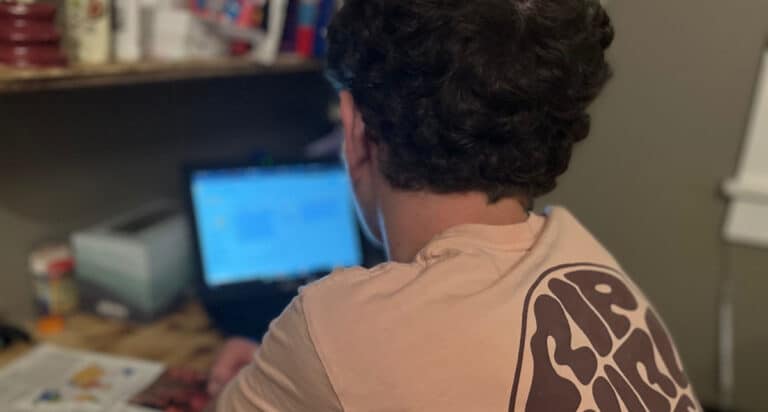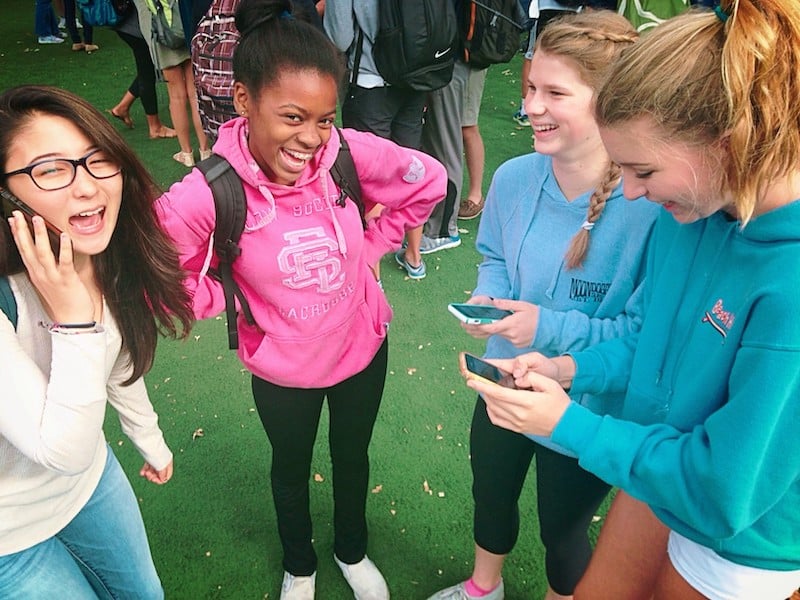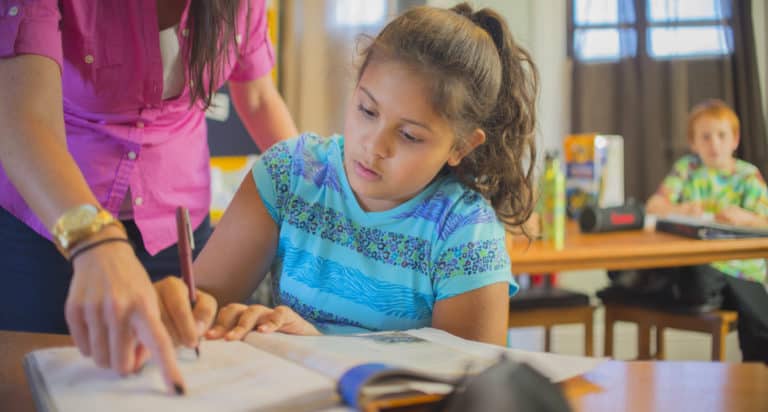I am entering my 25th year as an educator, having spent the majority of those years in the middle grades. When strangers find out I teach middle school they say things like, “Bless your heart!” and “Better you than me!” They make my job sound like a hardship, but the truth is this: middle schoolers are my people! I find their vulnerability, brutal honesty, and awkwardness refreshing, and I believe the world would be a better place if we could all embrace our inner adolescent and feel free to be a little weirder!

Middle school brings many challenges
But alas, middle school is not all fun and games. Adolescence also brings a whole host of challenges, not only for kiddos but also for parents and teachers.
This fall, many parents will find themselves taking on the role of teacher again as distance learning is likely to happen for at least some portion of the semester. For those of you who are terrified at the prospect, I have some tips on how you can support your middle school child through distance learning from a social-emotional, motivational, and cognitive perspective. These are gleaned from my classroom experience as well as my research in educational psychology and work as a professor of human development and learning.
How to support your middle school child through Distance Learning
Social-Emotional Perspective
- Physical appearance and body image are of great importance to adolescents. When students are able to attend school daily, they observe that even the girl they perceive to be the most “beautiful” in the class has an occasional bad hair day or acne breakout. But with distance learning, the only glimpse students have into peers’ lives is social media, which is filtered and polished. We adults know there is danger in comparing our everyday life to others’ highlight reels, but do our kids understand this? Discuss the difference between reality and portrayals on social media with your child. Support a healthy body image using suggestions from the experts at Bradley Hospital, a national center for research in child and adolescent psychiatry and a teaching hospital for The Warren Alpert Medical School of Brown University.
- Keep the lines of communication open. Your child will have concerns about what they hear on the news regarding the pandemic and may be fearful of family members falling ill. They may even know someone who has been sick or died from the virus. Provide a space for them to talk about things that might be causing them stress, even though they might prefer to retreat to their bedroom and not talk to you at all! My children (17 and 19) always disengaged when I peppered them with questions. So, over the years I wised up. Now when I want to connect more deeply with them, I take them on a long drive or a hike. This creates a non-threatening space in which they are more likely to share, especially when I use open-ended conversation starters.
- Encourage social gatherings to whatever extent you feel comfortable. Adolescents need to be around their peers, as this is a time in which they are developing their identity apart from their family and answering critical questions such as “Who am I?” and “What do I believe?” Find creative ways for them to safely connect with friends, whether that is playing video games virtually or a small, socially distant gathering at the beach or lake.
- Isolation can trigger mental health issues. Watch for red flags for depression, such as excessive sleeping, changes in eating habits and/or weight, lack of interest in hobbies or friends, and dramatic decline in academic performance. According to the National Institute of Mental Health, 13.3% of the U.S. population aged 12 to 17 has had at least one major depressive episode. Here is a resource to consult If you think your child may be at risk for depression, substance abuse, or other mental health concerns.
Motivational Perspective
- Students do better academically when they are intrinsically motivated rather than extrinsically motivated to achieve. The best way to foster intrinsic motivation is by offering your student autonomy to select courses and projects that align with their interests as much as possible. Maybe your student does not want to take Algebra as a 7th grader and would prefer to wait until high school. Now that the traditional school model has been turned on its head, why not view this as an opportunity to allow our kids to guide their own learning instead of remaining on the path that they thought they “should” take because that’s what everyone else was doing.
- Encourage your child to engage with all optional synchronous learning opportunities. If the teacher offers a weekly class meeting, participating in that can keep students connected to the teacher and each other, which can in turn increase engagement. Teachers in my district often use these meetings to discuss topics unrelated to the course in an effort to build community. Many teachers also offer periodic individual video or phone check-ins to keep students motivated.
- Remind your child that it’s okay to fail. Place the responsibility for their learning squarely on them. I have heard many stories of parents doing their children’s schoolwork for them during distance learning. While this may achieve your parenting goals in the short-term, it will not create autonomous, intrinsically motivated learners. Set high expectations for your child, create an environment that is conducive to learning, offer scaffolding as necessary (depending on disabilities that may exist) and then step aside and let them do the work. It’s the only way they will learn!
Cognitive Perspective
- Students’ beliefs about their intelligence and abilities influence their learning. Teaching them that intelligence is not fixed and that nearly any skill can be learned with practice can increase their willingness to persist in the face of difficulty. Sometimes missing or incomplete assignments are a sign that a student is afraid of failure. If this becomes a pattern with your child, rather than jumping to the conclusion that they are lazy or irresponsible, help them examine their beliefs about academic success. You may be surprised when you learn the reasons behind the behaviors, and this understanding can help you support your child in developing more adaptive beliefs about their potential. This will set them up for success in high school and beyond.
- Deep learning depends largely on practice. The Learning Scientists, a group of cognitive psychological scientists, suggest strategies students can use to help support acquisition of long-term knowledge and skills:
How to help your child develop long-term knowledge and skills
- Spaced Practice– Space out studying over time instead of cramming at the last minute.
- Retrieval Practice-Practice bringing information you’ve learned to mind. My students love online programs such as Quizlet for this, or you can use old-school methods like flashcards.
- Elaboration-Describe concepts in as much detail as possible, finding connections between ideas. Ask yourself questions such as- how are these ideas related? How do they relate to something else I already learned?
- Interleaving-Switch back and forth between ideas when studying. Don’t spend a large chunk of time focusing on just one thing.
- Concrete Examples-As much as possible, use concrete examples to represent abstract ideas. This helps make real-world connections and bring concepts to life.
- Dual coding– Create infographics, comic strips, diagrams, or other visuals to represent concepts. Study them and then try to re-create them from memory.
I’m not going to lie; I don’t love distance learning. I am just as ready as you are to get our kids back to school. But until it’s safe to do that, we will leave them in your hands and offer you as many tools as we can to set you up for success.
Please be patient with your kiddos, their teachers, and most importantly be patient with yourselves. We will get through this together!
You May Also Enjoy Reading:
Online Learning: How to Make it More Successful for Your Teen Next Year We asked educators and parents in our Grown and flown community to give us their best tips and here is what they told us.









